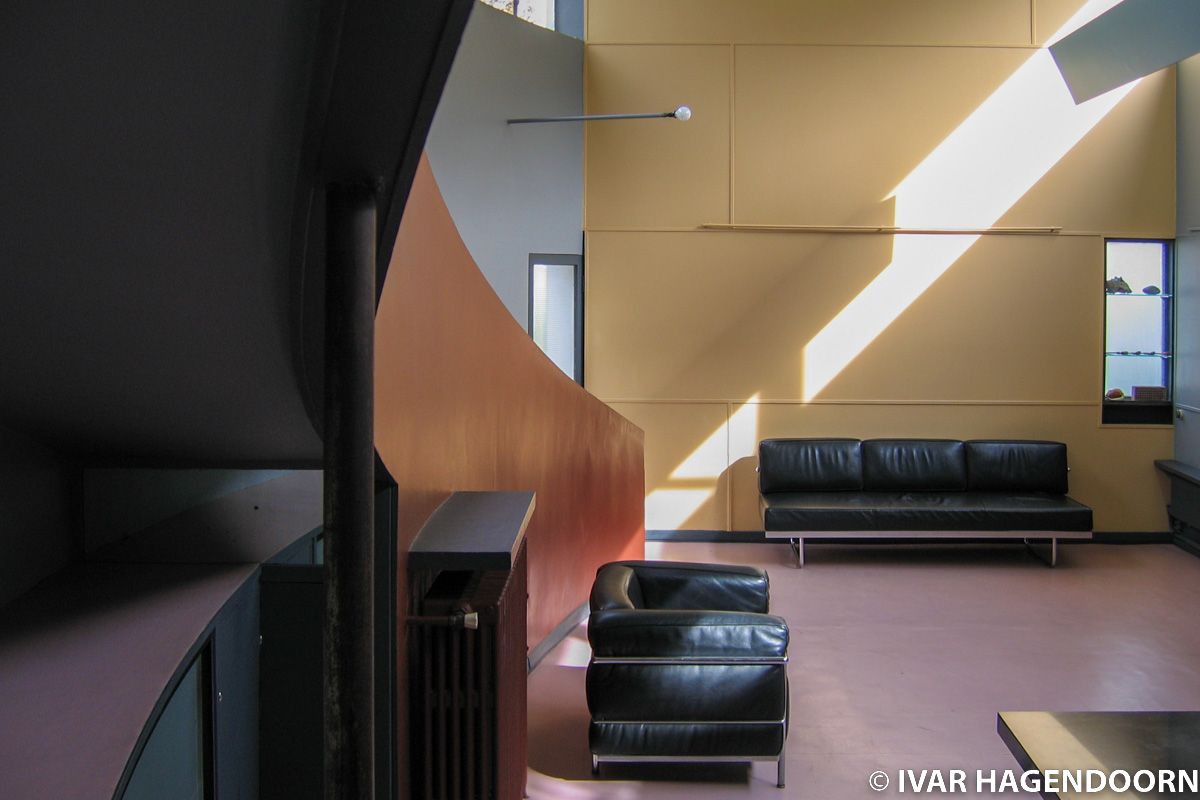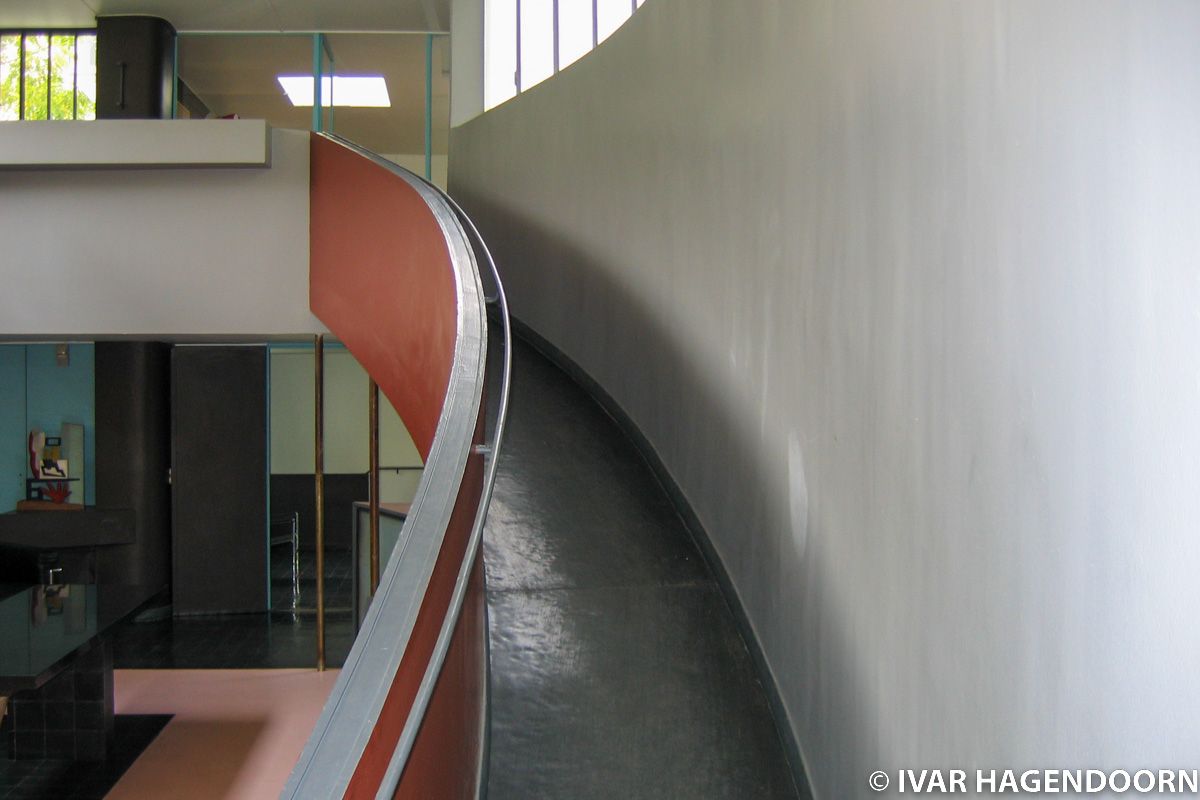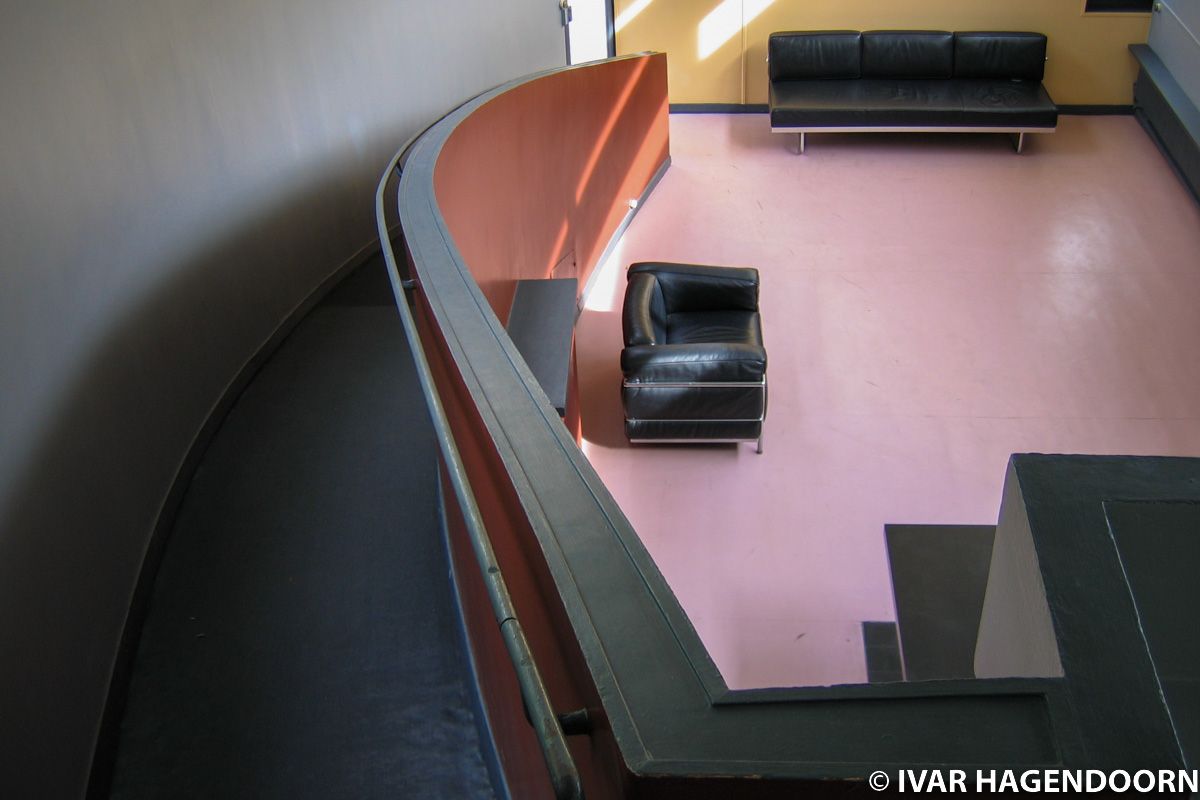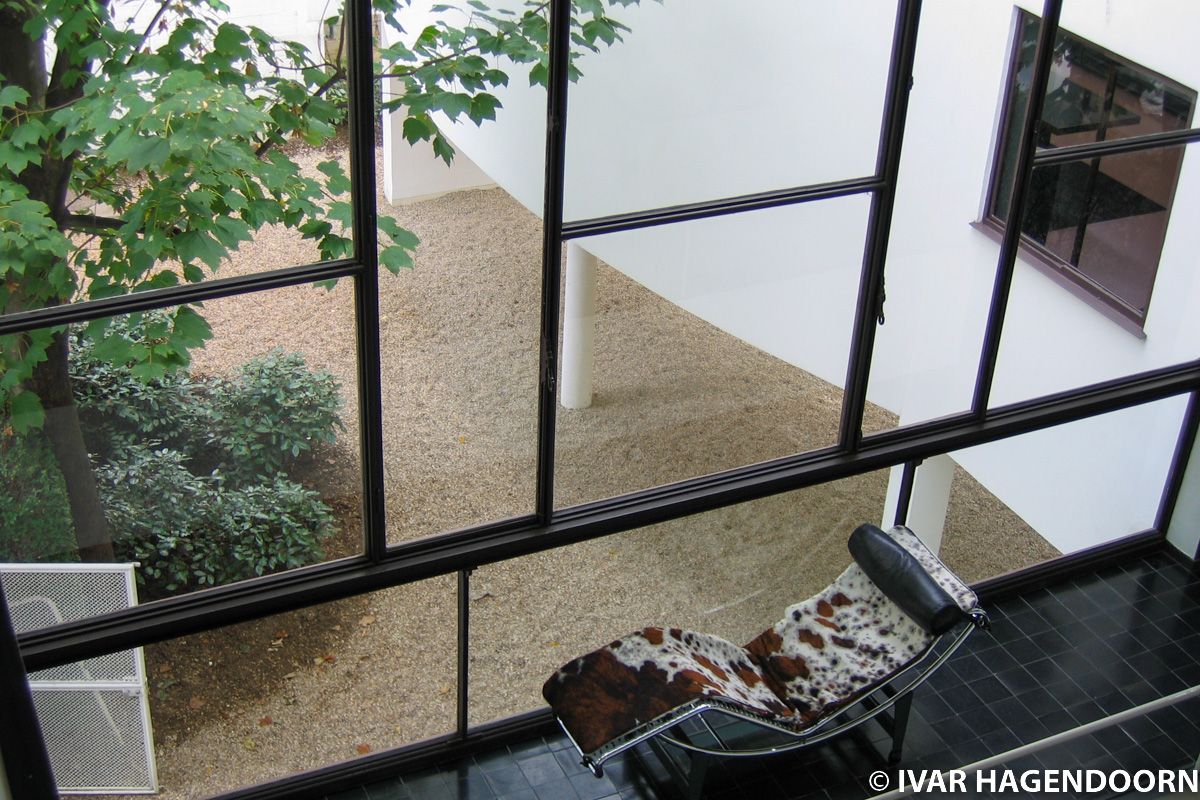



Villa La Roche in Paris. I should go back sometime now that I have a better camera.
The Le Corbusier retrospective currently at the Netherlands Architecture Institute is a must-see if you're interested in architecture. It covers every aspect of Le Corbusier's life and work. Among the exhibits there are some real gems. By this I don't refer to the pebbles from Le Corbusier's private collection, but to some of the items that are rarely seen together in one exhibition.
I was delighted to finally see the film version of "Poème Electronique" (1958), the installation created by Le Corbusier, Edgar Varèse and Iannis Xenakis for the world expo in Brussels. It still looks and sounds fresh and contemporary. Just as the pavillion actually, of which a large model and photos and film footage of its construction are shown. It really is or was quite extraordinary. If it would be shown at today's Venice Architecture Biennale chances are it would win a prize for best pavillion.
The many models, drawings and photos give an excellent overview of the various periods in Le Corbusier's career, a career which, despite the differences between for example Villa Savoye and the Chapel of Notre Dame du Haut in Ronchamps is surprisingly coherent. While Le Corbusier's ideas about architecture may have changed, his approach to architecture remained the same throughout his life. He didn't just invent some shapes, but tried to think through the context and the program to come up with an architectural solution. One example of this form of "architectural thinking" is the kitchen cupboard with sliding doors on both sides. It is amusing to watch Le Corbusier demonstrate this nifty little design trick in a short film fragment.
Le Corbusier the person may have been a bit "over self-confident". Upon arriving in New York he wondered where the photographers were to take his picture. But he also sent postcards to friends and relatives when he was abroad. I wonder whether he went out himself to buy them and whether he queued to buy some stamps. Occasionally, he sent some of his own drawings as a postcard. It is this kind of thing that sometimes makes me feel nostalgic.
The exhibition also includes various paintings and sculptures that Le Corbusier made throughout his life. The man was a total workaholic if not a complete maniac. Le Corbusier the painter and sculptor was greatly influenced by Picasso. Looking at his paintings and sculptures you recognize the same shapes and colors, or rather the same spirit, in his architectural designs, especially in his later work. You can see it in the kitchen unit for the Unité d'Habitation Marseille, designed with Charlotte Perriand, and in his final work, the Église Saint-Pierre de Firminy.
Le Corbusier was one of the greatest architects of the 20th century. While some of his work and ideas now appear a bit dated, they still cast their shadow. Projected on the wall behind a model of his Ville Radieuse (Radiant City) a short film shows Le Corbusier presenting his plans for Paris. He draws a line, erases an entire section and plants one of his Cartesian skyscrapers, a gesture which is now repeated by city planners in Beijing, Shanghai, Guangzhou and other Chinese cities, except that they must have missed out on the green zones that surround each of Le Corbusier's Cartesian skyscrapers.
Le Corbusier. The Art of Architecture is at the Netherlands Architecture Institute, Rotterdam, until 2 september 2007.